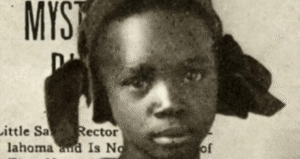The origin of the nickname ‘Uncle Sam’ for the Federal Government can be traced back to the War of 1812. The nickname is said to have originated from meat packer Samuel Wilson, who supplied barrels of beef to the United States Army. The barrels were stamped with ‘U.S.’ for United States, but soldiers began joking that the initials stood for ‘Uncle Sam’ Wilson. This playful interpretation of the initials transformed into a widely recognized moniker for the U.S. government, embodying a sense of familiarity and personification of the nation. The Story of Samuel Wilson Let’s delve a bit deeper into the life of Samuel Wilson, the man behind the iconic nickname. Born in 1766 in Arlington, Massachusetts, Wilson was a businessman by the time the War of 1812 broke out. He owned a meatpacking business in Troy, New York, a bustling hub for trade and industry at the time. Known for his honesty and reliability, Wilson’s meatpacking company was contracted to supply the U.S. Army with beef. Each barrel was marked with ‘U.S.’ to denote government property, but the soldiers’ jest that ‘U.S.’ stood for ‘Uncle Sam’ Wilson quickly caught on and spread beyond the army.
The Making of a Local Legend
Wilson’s reputation in Troy was not just built on his business acumen. Residents admired him for his civic-mindedness and integrity. He was known to help his neighbors and contribute to local causes, earning him respect and affection. This community regard was key in the broader adoption of his nickname. As the joke about ‘Uncle Sam’ spread, so did the legend of Samuel Wilson as a symbol of American virtues: industriousness, honesty, and a sense of communal responsibility.
Popularization of the Term
The term ‘Uncle Sam’ gained more widespread popularity due to political cartoons by Thomas Nast in the 1860s. Nast, a prominent American cartoonist, utilized his distinctive style to portray Uncle Sam as a symbol of the United States government, often embodying strength and authority in his illustrations. Nast’s influential depictions ingrained the image of Uncle Sam in the public consciousness, associating the figure with patriotism and governmental representation. Through Nast’s creative interpretations, Uncle Sam transcended mere caricature to become a powerful emblem of national identity and governance.
Thomas Nast’s Influence
Thomas Nast’s role in shaping the image of Uncle Sam cannot be overstated. Often credited with creating the modern version of Santa Claus and popularizing the symbol of the Republican elephant, Nast’s work resonated with the public. His portrayal of Uncle Sam was not just about a visual representation; it was about instilling a sense of pride and unity. During a time when the nation was grappling with issues of identity and unity, Nast’s cartoons offered a relatable and rallying figure in Uncle Sam.
Symbolism and Iconography
Uncle Sam is commonly depicted as a lanky older man with a white goatee, exuding a dignified demeanor. Clad in a top hat and a suit adorned with stars and stripes, Uncle Sam’s attire symbolizes the essence of American patriotism and national pride. The top hat, reminiscent of formal attire worn by statesmen, conveys authority and leadership, further enhancing Uncle Sam’s role as a representation of governmental power. The incorporation of stars and stripes in his clothing serves as a visual representation of the American flag, underscoring Uncle Sam’s association with the ideals of the nation. The enduring iconography of Uncle Sam continues to resonate as a poignant symbol of American values and governmental authority, perpetuating his legacy as an embodiment of national identity.
The Evolution of Uncle Sam’s Image
Over the years, the portrayal of Uncle Sam has evolved, reflecting the changing times and sentiments of the American public. Initially, he was portrayed as a stern figure, symbolizing the government’s authority. However, as America evolved, so did Uncle Sam. During the World Wars, he was depicted as a call to action, famously pointing and saying, “I Want YOU for U.S. Army” in recruitment posters. This dynamic shift in imagery demonstrated the flexibility of the Uncle Sam symbol to adapt to the nation’s needs, from portraying authority to rallying citizens for a common cause.
Impact on American Culture
The impact of Uncle Sam on American culture is profound. As a symbol, he has transcended his origins to become an integral part of the national consciousness. From political campaigns to pop culture, Uncle Sam’s imagery is utilized to evoke a sense of duty, pride, and American spirit.
Uncle Sam in Media and Advertising
Uncle Sam’s image is not just limited to posters and cartoons; it has found its way into various forms of media and advertising. Companies have used his likeness to promote products, often tapping into his association with trust and national pride. For instance, during war times, Uncle Sam was used in advertisements to encourage the purchase of war bonds, promoting a collective effort for the war cause. His image was also used to boost morale and foster a sense of community among citizens, reinforcing the idea that everyone had a role to play in the nation’s success.
Common Misconceptions
While Uncle Sam is a well-known figure, there are several misconceptions about him and his origins. One common myth is that Uncle Sam originated during the American Revolution, but as we’ve explored, his roots are firmly planted in the War of 1812. Another misconception is regarding his attire; while his striped trousers and star-spangled jacket are iconic, they have evolved over time, influenced by artists and cultural shifts.
Addressing Myths and Facts
Understanding the true story behind Uncle Sam helps in appreciating the richness of American history. For instance, the misconception that ‘Uncle Sam’ was a nickname for the country itself, rather than its government, highlights how deeply interwoven his image is with American identity. Clarifying these myths not only honors Samuel Wilson’s legacy but also enriches our understanding of how symbols are born and evolve.
Uncle Sam in Modern Times
Today, Uncle Sam continues to be a powerful symbol, though his role has adapted to fit a modern context. In an era where branding and imagery play significant roles in communication, Uncle Sam’s likeness speaks volumes without uttering a word.
Relevance in Contemporary Society
In contemporary society, Uncle Sam is often invoked in political discourse, representing government accountability and citizen engagement. His image is utilized by various political movements to symbolize the voice of the people and their relationship with the government. Whether advocating for civic duty or critiquing governmental policies, Uncle Sam remains a versatile figure in political commentary.
Educational Impact
Uncle Sam also serves as a valuable educational tool. In schools across the nation, students learn about American history and government through the lens of Uncle Sam’s story. His image provides a relatable entry point for discussions about national identity, civic responsibility, and historical context.
Incorporating Uncle Sam in Education
Educators can leverage Uncle Sam’s story to engage students with American history. By exploring his origins and evolution, students gain insights into how symbols are used to unify and inspire. Activities such as analyzing political cartoons or creating their own interpretations of Uncle Sam can foster critical thinking and creativity, making history lessons both informative and enjoyable.
Uncle Sam’s Role in Civic Engagement
Uncle Sam’s enduring image is more than historical; it is a call to civic engagement. His figure has long been associated with government recruitment and public service announcements. Understanding how his image has been used throughout history can inspire contemporary citizens to engage more actively with their government.
Encouraging Civic Participation
Uncle Sam’s famous recruitment posters were not just about enlisting soldiers; they were about encouraging every citizen to participate in the nation’s endeavors. This principle can be applied today, urging citizens to vote, participate in local governance, or volunteer for community service. His image serves as a reminder that governance is a collective responsibility.
Modern Campaigns and Uncle Sam
Uncle Sam’s image continues to be used in modern campaigns aimed at encouraging voter registration or raising awareness about civic duties. For instance, during election years, his image might be invoked in campaigns aimed at increasing voter turnout, stressing the importance of each vote in shaping the nation’s future.
The Artistic Legacy of Uncle Sam
Beyond politics and education, Uncle Sam has left a mark on the world of art and design. His image has been interpreted and reimagined by countless artists, making him a subject of cultural and artistic exploration.
Artistic Interpretations
From the bold strokes of political cartoons to the nuanced renditions in fine art, Uncle Sam has been portrayed in myriad ways. Each artist brings their own perspective, reflecting the sentiments of the era and offering fresh takes on this iconic figure. This constant reinterpretation keeps Uncle Sam relevant, allowing him to resonate with each new generation.
Uncle Sam in Contemporary Art
In recent years, contemporary artists have used Uncle Sam to comment on current social and political issues, highlighting his role as a cultural touchstone. These modern interpretations often challenge traditional views and provoke thought, demonstrating the ongoing dialogue between history and contemporary culture.
The Global Impact of Uncle Sam
While Uncle Sam is a distinctly American symbol, his influence has transcended national borders. He has been recognized and referenced internationally, underscoring his role as a symbol of American culture.
International Perceptions
Uncle Sam is often seen as a representation of American foreign policy and cultural influence. In international media and political cartoons, he may be used to comment on the U.S.’s role in global affairs, reflecting both admiration and criticism. This global awareness of Uncle Sam further cements his place as a significant cultural icon.
Future of Uncle Sam
As America continues to evolve, so will the image and symbolism of Uncle Sam. His legacy as a cultural and political icon ensures that he will remain a part of the American narrative, adapting to reflect the country’s values and challenges.
Adapting to Change
In an ever-changing world, symbols like Uncle Sam must adapt to stay relevant. This adaptability is part of what makes Uncle Sam enduring. As new issues arise and societal values shift, Uncle Sam will likely continue to reflect these changes, serving as a mirror to the nation’s soul.
Continued Relevance
Despite the passage of time, Uncle Sam’s core message of unity, duty, and patriotism remains relevant. His image serves as a reminder of the collective spirit that has driven the nation forward, encouraging future generations to uphold these ideals in their own ways.
The journey of Uncle Sam from a meat packer’s nickname to a national icon is a testament to the power of symbols in shaping cultural and national identity. His enduring legacy as a representation of the U.S. government and American values continues to inspire and engage people, reminding us of the shared history and ideals that bind us as a nation. Through his image, Uncle Sam connects the past with the present, serving as a reminder of the enduring spirit of America.




